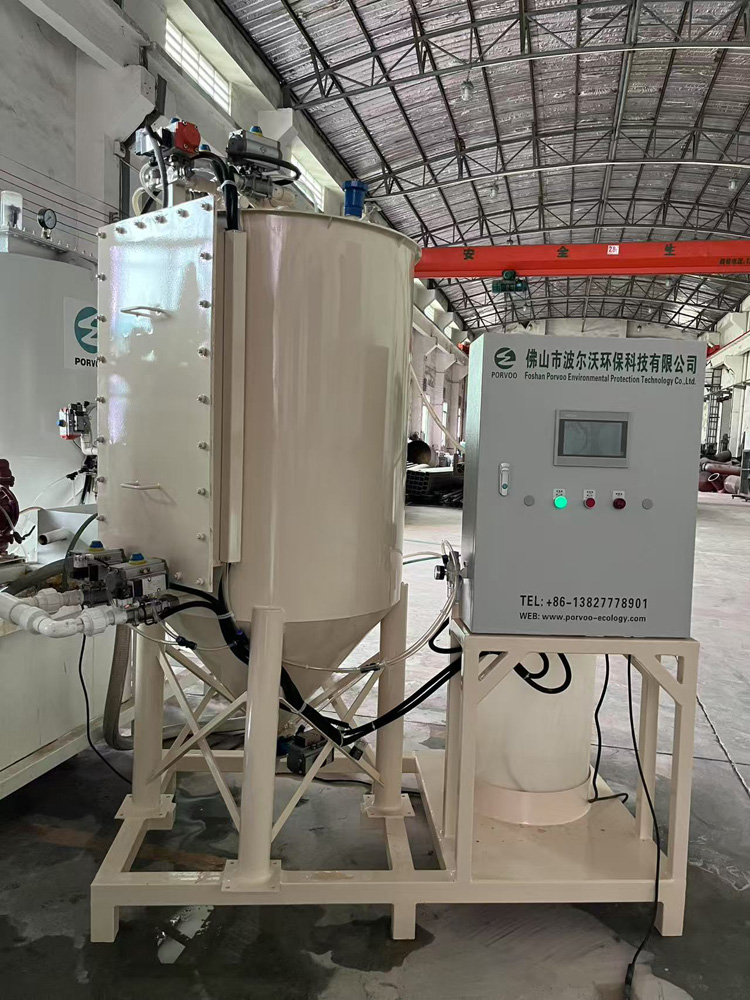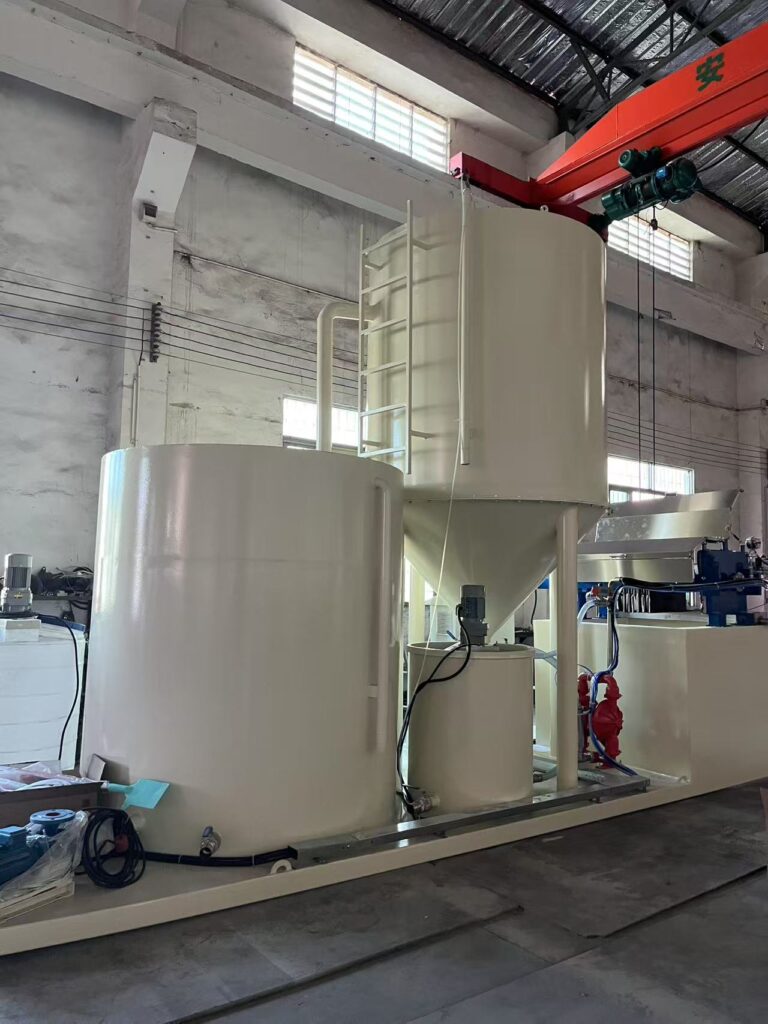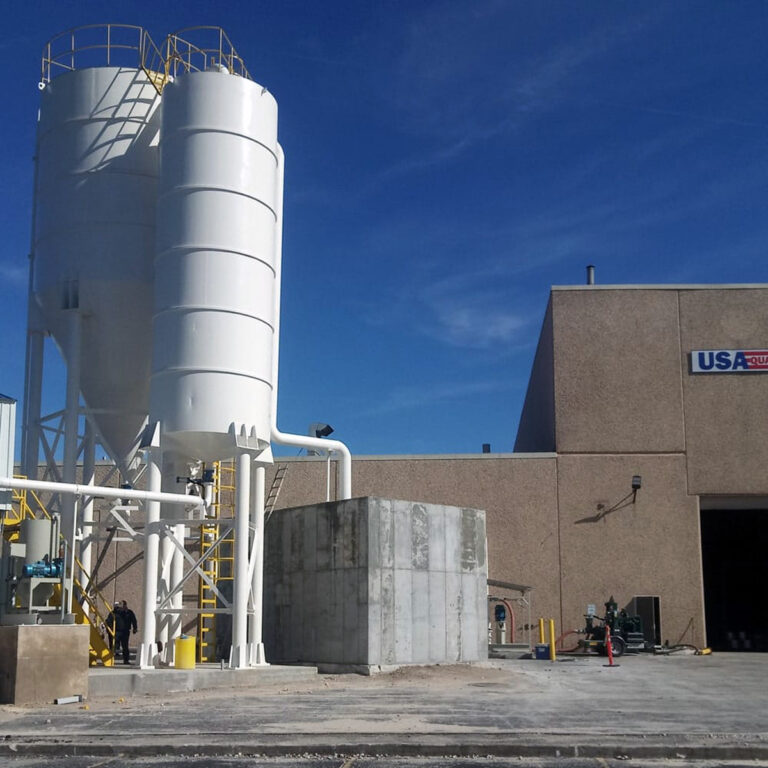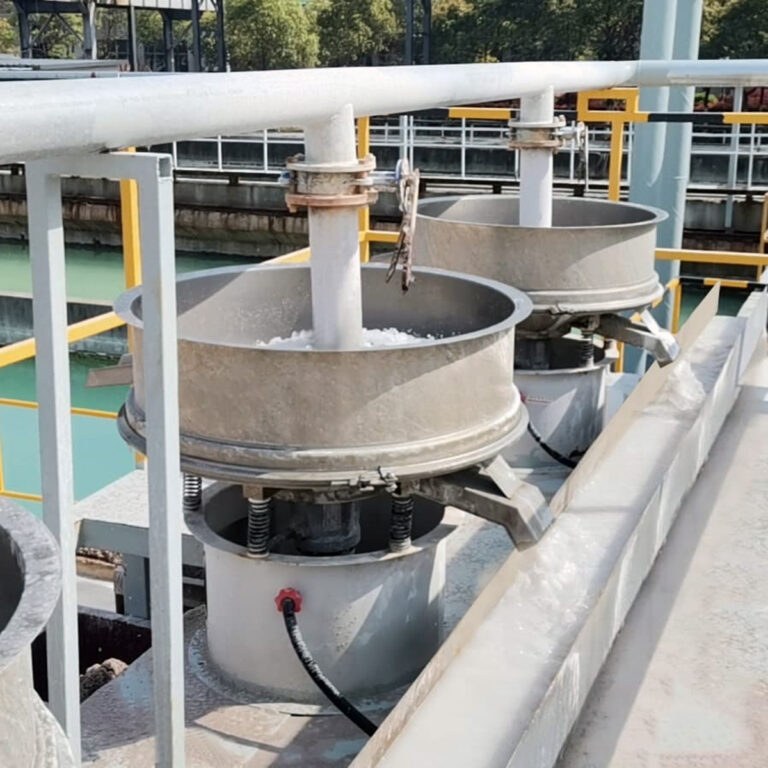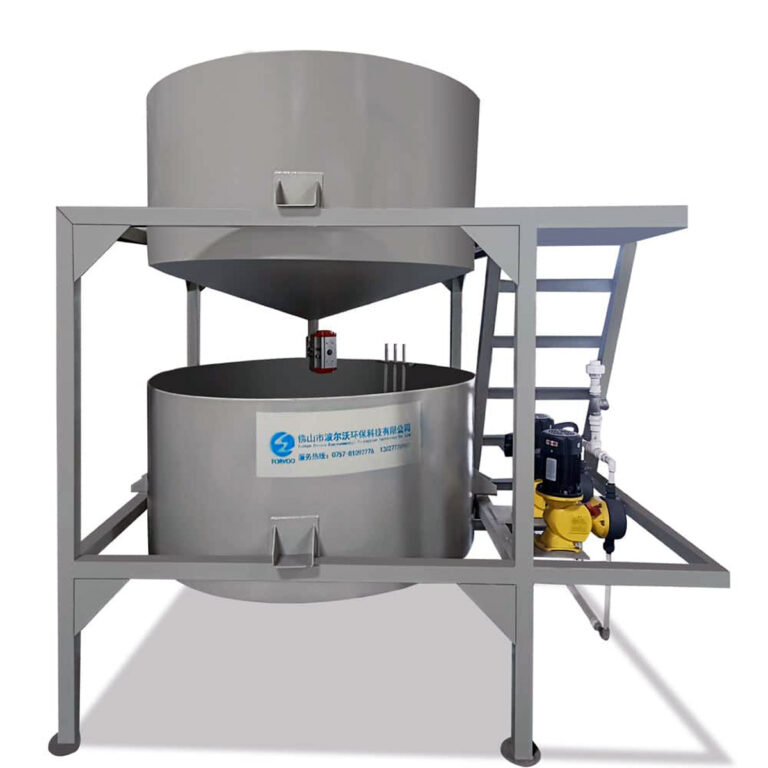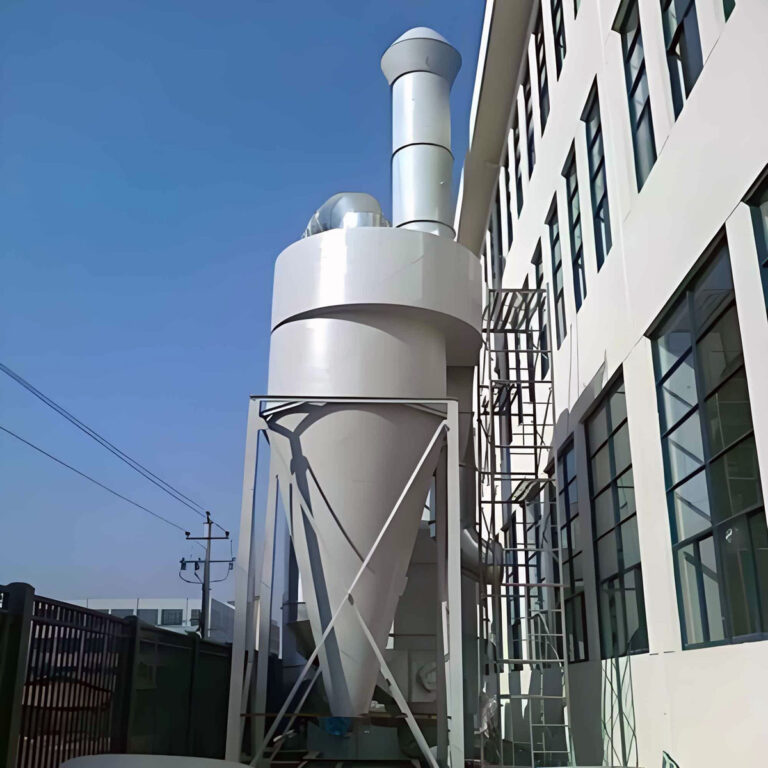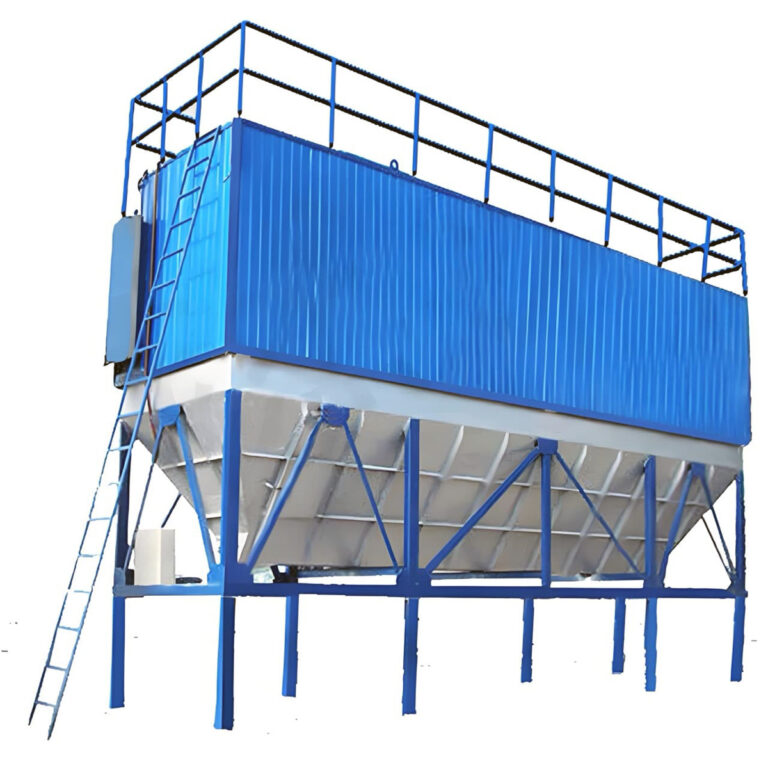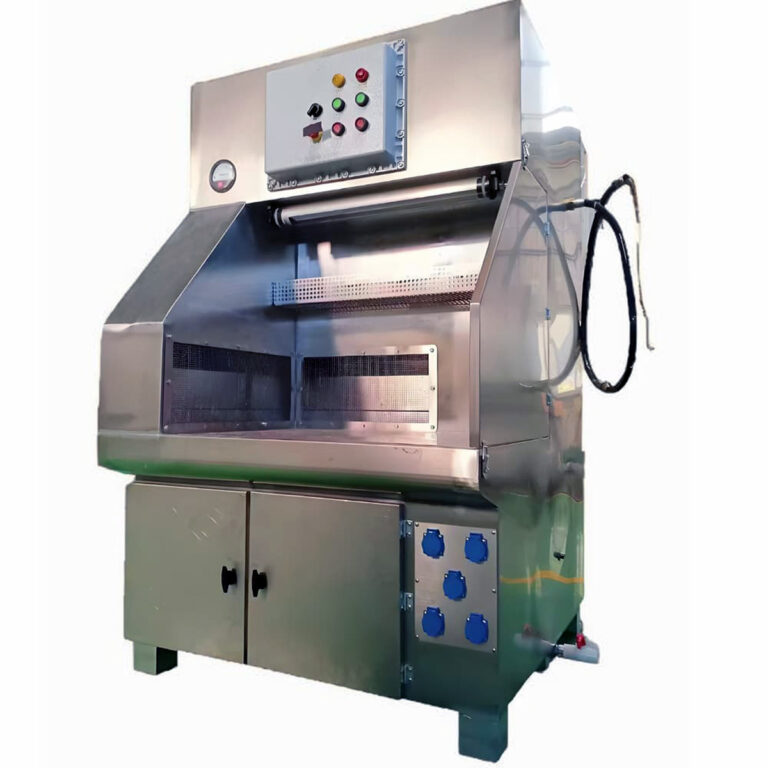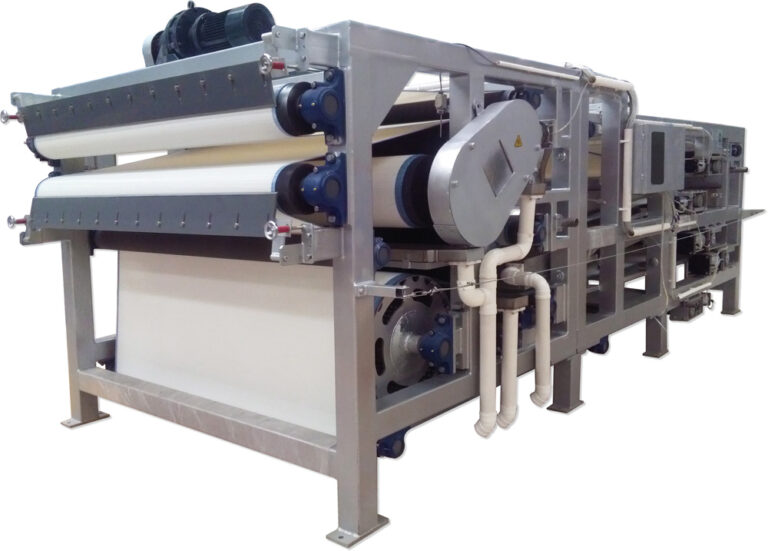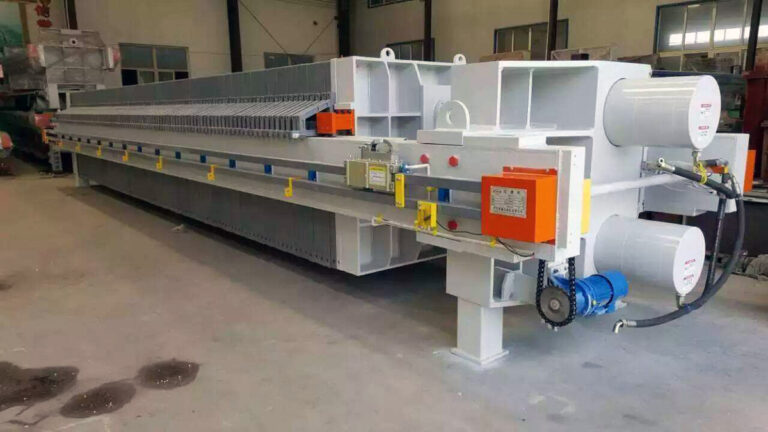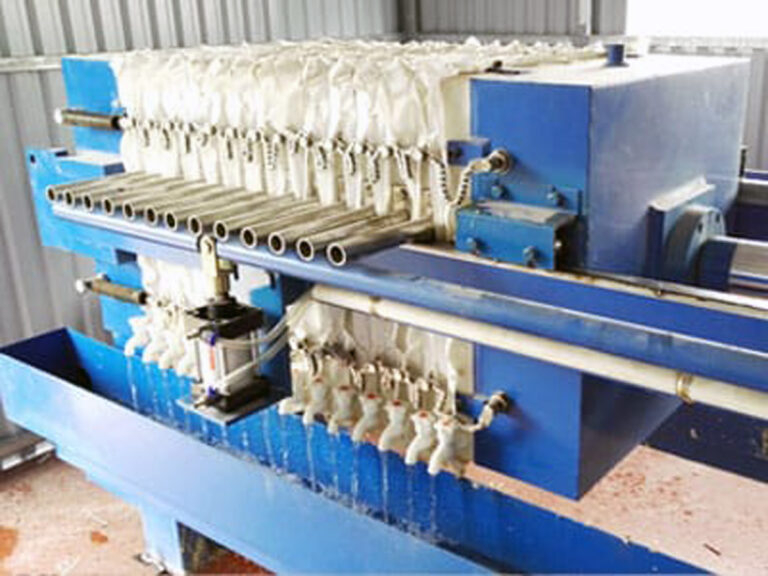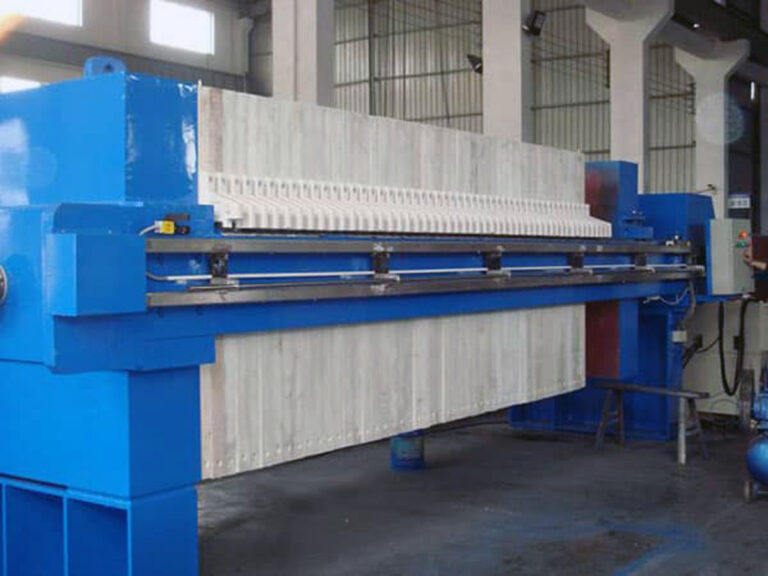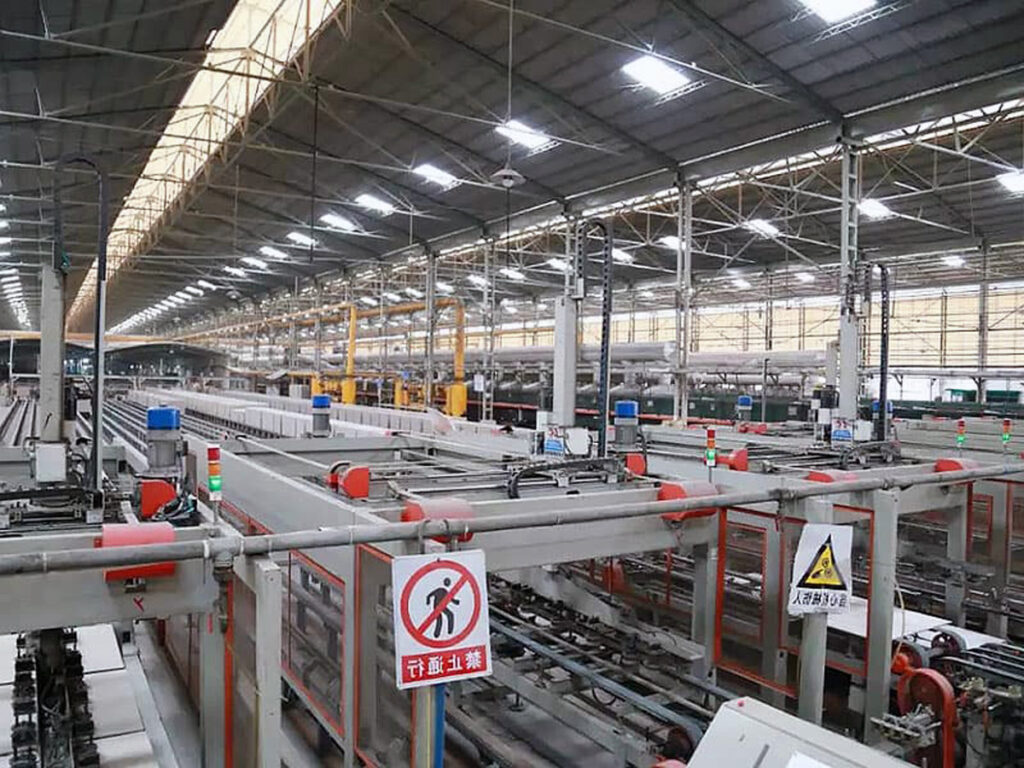The ceramic and stone processing industries face mounting pressure to manage their wastewater effectively while maintaining operational efficiency. Ceramic wastewater treatment represents one of the most complex industrial water management challenges, with facilities generating thousands of gallons of contaminated water daily containing suspended solids, chemical additives, and varying pH levels.
Manufacturing facilities across the ceramic industry struggle with increasingly stringent environmental regulations, rising disposal costs, and water scarcity issues. Without proper treatment systems, these operations face potential shutdowns, hefty fines, and reputational damage. The consequences extend beyond compliance—untreated ceramic wastewater can contaminate local water sources, harm aquatic ecosystems, and create long-term environmental liabilities.
This comprehensive guide examines proven ceramic industry water treatment solutions, from traditional clarification methods to cutting-edge membrane technologies. We’ll explore real-world applications, performance metrics, and strategic implementation approaches that leading manufacturers use to transform their wastewater challenges into competitive advantages through PORVOO‘s innovative treatment systems.
What is Ceramic Wastewater Treatment and Why Does It Matter?
Ceramic wastewater treatment encompasses the specialized processes designed to remove contaminants from water used in ceramic tile production, pottery manufacturing, and stone processing operations. These systems must handle unique challenges including high concentrations of suspended clay particles, chemical glazes, and mineral deposits that standard industrial treatment methods cannot effectively address.
Understanding Ceramic Industry Wastewater Characteristics
Ceramic manufacturing generates wastewater with total suspended solids (TSS) concentrations ranging from 2,000 to 15,000 mg/L—significantly higher than most industrial processes. The water typically contains kaolin clay, feldspar particles, and various chemical additives used in glazing operations. pH levels fluctuate dramatically, often swinging between 4.5 and 11.2 depending on the production stage.
In our experience working with ceramic manufacturers, the particle size distribution presents particular challenges. While larger particles settle readily, fine clay particles create stable suspensions that require specialized coagulation and flocculation processes. These microscopic particles, typically 0.1 to 50 microns, carry negative surface charges that resist conventional gravity separation.
Environmental and Economic Impact
The environmental significance of proper ceramic industry water treatment cannot be overstated. A medium-sized ceramic tile facility processes approximately 500,000 gallons of water daily, with 60-80% requiring treatment before discharge or reuse. According to recent Environmental Protection Agency data, ceramic manufacturers that implement comprehensive industrial wastewater treatment solutions reduce their environmental footprint by 75% while achieving 85-95% water recovery rates.
| Treatment Stage | Water Quality Parameter | Typical Range |
|---|---|---|
| Raw Wastewater | TSS (mg/L) | 2,000-15,000 |
| Post-Primary Treatment | TSS (mg/L) | 200-800 |
| Final Effluent | TSS (mg/L) | <30 |
| pH Range | Throughout Process | 6.5-8.5 |
How Does Ceramic Industry Water Treatment Work?
Modern ceramic industry water treatment systems employ multi-stage processes that combine physical, chemical, and biological treatment methods. The complexity of ceramic wastewater requires carefully orchestrated treatment sequences to achieve both regulatory compliance and water recovery objectives.
Primary Treatment and Solids Removal
The initial treatment phase focuses on removing large particles and reducing the bulk of suspended solids through screening and primary clarification. High-rate clarifiers equipped with lamella plates increase settling efficiency by 300-400% compared to conventional circular clarifiers. These systems typically achieve 70-85% TSS removal while handling hydraulic loading rates of 1.5-2.0 gpm/ft².
Coagulation and flocculation represent critical steps in primary treatment. Aluminum sulfate and polyaluminum chloride prove most effective for ceramic wastewater, with optimal dosing rates ranging from 150-300 mg/L depending on raw water characteristics. The key is achieving proper mixing energy—initial flash mixing at 300-400 rpm followed by gentle flocculation at 30-50 rpm for 15-20 minutes.
Advanced Filtration and Membrane Technologies
Secondary treatment increasingly relies on membrane filtration systems, particularly ultrafiltration (UF) and microfiltration (MF) technologies. These systems excel at removing residual suspended solids and colloidal particles that escape primary treatment. UF membranes with 0.01-0.1 micron pore sizes consistently achieve less than 5 mg/L TSS in treated effluent.
Recent advances in ceramic membrane technology—ironically, using ceramic materials to treat ceramic wastewater—offer superior chemical resistance and longer service life. Industry consensus suggests that ceramic membranes last 3-5 times longer than polymer alternatives in harsh ceramic processing environments, despite higher initial costs.
Chemical Treatment and pH Adjustment
Stone processing wastewater often requires extensive chemical treatment to neutralize pH and precipitate dissolved metals. Lime addition remains the most cost-effective neutralization method, though it generates additional sludge requiring disposal. Automated pH control systems maintain optimal ranges while minimizing chemical consumption—typically reducing lime usage by 15-25% compared to manual dosing.
What Are the Key Challenges in Stone Processing Wastewater Management?
Stone processing facilities face unique obstacles that distinguish their wastewater treatment needs from other ceramic industry operations. These challenges stem from the abrasive nature of stone cutting, the variety of stone types processed, and the intensive water usage required for dust suppression and equipment cooling.
High Abrasive Content and Equipment Wear
Stone cutting operations generate extremely abrasive slurries containing quartz, granite, and marble particles that accelerate equipment wear. Pump impellers, pipe fittings, and treatment tank components experience 2-3 times normal wear rates when handling stone processing wastewater. This necessitates specialized materials selection and more frequent maintenance scheduling.
A granite processing facility in Vermont reported pump replacement costs exceeding $75,000 annually before implementing specialized ceramic-lined equipment and optimized water treatment systems. The upgraded system reduced maintenance costs by 60% while improving treatment efficiency.
Variable Water Quality and Flow Rates
Stone processing operations exhibit significant variations in wastewater characteristics depending on stone type, cutting methods, and production schedules. Granite processing generates highly alkaline wastewater (pH 9-11) with high silica content, while marble cutting produces acidic conditions (pH 5-7) with elevated calcium levels. These fluctuations challenge conventional treatment systems designed for steady-state operation.
| Stone Type | Typical pH Range | Primary Contaminants | Treatment Challenges |
|---|---|---|---|
| Granite | 9.0-11.0 | Silica, Feldspar | Alkaline neutralization |
| Marble | 5.0-7.0 | Calcium carbonate | Scaling prevention |
| Limestone | 7.5-8.5 | Carbonate minerals | Moderate treatment |
Energy Consumption and Operating Costs
Stone processing wastewater treatment systems consume substantial energy for pumping, aeration, and mechanical separation. Power costs typically represent 35-45% of total operating expenses for these facilities. While energy-intensive, proper treatment system design can reduce consumption through process optimization and equipment selection.
Which Ceramic Factory Water Systems Deliver the Best Results?
The most effective ceramic factory water systems combine proven technologies with innovative approaches tailored to specific manufacturing processes. Success depends on matching treatment technologies to wastewater characteristics while considering operational constraints and economic factors.
Clarification and Thickening Systems
High-rate clarifiers with integrated thickening capabilities represent the backbone of most successful ceramic wastewater treatment installations. These systems achieve 85-95% TSS removal while producing concentrated underflow sludge at 8-12% solids content. The key advantage lies in their ability to handle variable loading conditions common in ceramic manufacturing.
Modern clarifier designs incorporate rake mechanisms with variable speed drives and automated sludge level controls. These features optimize settling performance while minimizing energy consumption. As industry expert Dr. James Morrison notes, “The latest clarifier technologies reduce footprint requirements by 40% while improving performance consistency.”
Filtration and Dewatering Technologies
Ceramic plant water solutions increasingly rely on pressure filtration systems for final polishing and sludge dewatering. Filter presses achieve 99%+ TSS removal and produce filter cake with 45-55% solids content, significantly reducing disposal costs. Automatic filter presses with membrane squeeze capabilities further enhance dewatering efficiency.
Belt filter presses offer advantages for continuous operation facilities, handling 500-2000 gallons per minute while producing 18-25% solids cake. The choice between filter press types depends on batch versus continuous operations, available space, and labor considerations.
Integrated Water Recovery Systems
Leading ceramic manufacturers implement closed-loop water recovery systems that reclaim 80-95% of process water. These systems combine multiple treatment stages with real-time monitoring and automated controls. A tile manufacturing facility in Ohio achieved 92% water recovery while reducing fresh water consumption by 500,000 gallons monthly through integrated treatment solutions.
How to Optimize Tile Manufacturing Wastewater Treatment?
Tile manufacturing wastewater treatment optimization requires systematic approaches that address both immediate operational needs and long-term sustainability goals. The most successful optimization strategies focus on process integration, technology upgrades, and operational excellence.
Process Integration and Water Reuse
Tile manufacturing wastewater optimization begins with understanding water usage patterns throughout the production process. Glazing operations typically generate the highest quality wastewater, while body preparation creates the most challenging treatment conditions. Segregating these streams allows for targeted treatment approaches and maximizes reuse opportunities.
Counter-current washing systems reduce fresh water consumption by 40-60% while improving treatment efficiency. These systems route treated water to less critical applications first, then progressively use it for more demanding processes. The result is both water conservation and improved overall system performance.
Technology Upgrades and Performance Monitoring
Modern ceramic manufacturers invest in advanced monitoring systems that track key performance indicators in real-time. Turbidity meters, pH sensors, and flow measurement devices provide continuous feedback for process optimization. These systems identify treatment inefficiencies before they impact product quality or regulatory compliance.
Automated chemical dosing systems reduce operating costs by 15-25% while improving treatment consistency. Variable frequency drives on pumps and blowers optimize energy consumption based on actual demand rather than design maximums.
Maintenance and Operational Excellence
Preventive maintenance programs prove critical for sustained treatment performance. Regular equipment inspections, calibration schedules, and predictive maintenance techniques prevent costly breakdowns and ensure consistent water quality. It’s worth noting that facilities with comprehensive maintenance programs achieve 95%+ system uptime compared to 75-80% for reactive maintenance approaches.
What Are the Future Trends in Ceramic Plant Water Solutions?
The ceramic industry water treatment landscape continues evolving with emerging technologies, regulatory changes, and sustainability initiatives driving innovation. Understanding these trends helps manufacturers make informed decisions about system upgrades and long-term planning.
Advanced Membrane Technologies and Automation
Next-generation ceramic plant water solutions incorporate artificial intelligence and machine learning algorithms for predictive process control. These systems analyze historical data patterns to optimize treatment parameters automatically, reducing operator intervention while improving performance consistency. Early adopters report 10-15% improvements in treatment efficiency and 20-25% reductions in chemical consumption.
Ceramic membrane technology advances promise even greater durability and performance. New manufacturing techniques produce membranes with enhanced porosity control and improved chemical resistance, extending service life to 7-10 years in demanding applications.
Circular Economy and Zero Liquid Discharge
The transition toward circular economy principles drives interest in zero liquid discharge (ZLD) systems for ceramic manufacturing. While currently limited to high-value applications due to energy requirements, advancing evaporation and crystallization technologies may make ZLD economically viable for broader implementation within the next 5-10 years.
European manufacturers lead this trend, with several facilities achieving near-zero discharge through innovative water recovery and byproduct utilization programs. These initiatives transform waste streams into valuable resources while eliminating discharge permit requirements.
Regulatory Evolution and Compliance Technology
Emerging regulations focus on total dissolved solids (TDS) limits and nutrient discharge restrictions that traditional treatment systems struggle to meet. Advanced treatment technologies including reverse osmosis, ion exchange, and biological nutrient removal will become increasingly necessary for regulatory compliance.
Conclusion
Effective ceramic wastewater treatment requires comprehensive understanding of process-specific challenges, careful technology selection, and commitment to operational excellence. The most successful implementations combine proven clarification and filtration technologies with advanced monitoring and control systems that optimize performance while minimizing operating costs.
The key insights from this analysis emphasize the importance of system integration, water recovery optimization, and proactive maintenance programs. Facilities that achieve 85-95% water recovery rates while maintaining consistent discharge quality demonstrate the potential for transforming wastewater treatment from a cost center into a competitive advantage.
For ceramic manufacturers seeking to optimize their water treatment operations, the path forward involves systematic evaluation of current systems, identification of improvement opportunities, and strategic implementation of appropriate technologies. The investment in proper treatment infrastructure pays dividends through reduced operating costs, enhanced regulatory compliance, and improved environmental stewardship.
Consider partnering with experienced treatment specialists who understand the unique challenges of ceramic wastewater management. Professional industrial wastewater treatment solutions can provide the expertise and technology needed to achieve your water treatment objectives while supporting long-term operational success.
What specific water quality challenges does your ceramic operation face, and how might these treatment approaches address your unique requirements?
Frequently Asked Questions
Q: What is Ceramic Water Treatment in the context of Stone Processing Solutions?
A: Ceramic Water Treatment is a method that uses ceramic ultrafiltration membranes to treat wastewater generated during stone processing operations like cutting, polishing, and washing. These membranes effectively remove suspended solids, oils, and other contaminants from the wastewater, enabling recycling and reuse of water. This process helps stone processing facilities reduce environmental impact and comply with discharge regulations while maintaining production efficiency.
Q: How do ceramic membranes compare to traditional polymeric membranes for stone processing wastewater?
A: Ceramic membranes outperform conventional polymeric membranes in several ways:
- Durability: Ceramic membranes last much longer, often several years without replacement, whereas polymeric membranes may need replacement in just over a year.
- Resistance: They tolerate a wider pH range and handle abrasive, oily wastewater better.
- Performance: Ceramic membranes maintain high flux rates and require less frequent cleaning.
These advantages translate into lower maintenance costs and more consistent wastewater treatment in stone processing applications.
Q: What are the main benefits of using Ceramic Water Treatment in stone processing facilities?
A: Key benefits include:
- Water recycling: Enables up to 100% reuse of process water, reducing freshwater consumption.
- Environmental compliance: Meets strict industrial discharge and zero-liquid discharge (ZLD) requirements.
- Cost savings: Reduces chemical use and lowers operational and maintenance expenses.
- Improved product quality: Cleaner water reduces defects in stone finishing.
- Waste management: Converts sludge into manageable dry cakes for easier disposal or reuse.
Q: Can Ceramic Water Treatment systems handle fluctuations in wastewater quality from stone processing?
A: Yes, ceramic ultrafiltration membranes are highly adaptable to changes in water quality, such as varying levels of suspended solids, oils, and pH. Their robust design ensures consistent filtration performance even under challenging conditions, minimizing downtime and extending the lifespan of downstream equipment like reverse osmosis systems.
Q: How does a typical Ceramic Water Treatment process work for stone processing wastewater?
A: The process generally involves:
- Collecting wastewater in a sump or pit.
- Adding flocculants to aggregate suspended particles.
- Settling heavy solids in a silo or tank.
- Pumping sludge to an automated filter press to dewater it.
- Passing the clarified water through ceramic ultrafiltration membranes to remove fine solids and contaminants.
- Storing treated water for reuse in the production process.
This closed-loop system optimizes water usage and waste management efficiently.
Q: What industries besides stone processing benefit from Ceramic Water Treatment solutions?
A: Beyond stone processing, ceramic membranes are extensively used in mining wastewater treatment, desalination pretreatment, power plants, and municipal water treatment. Their robustness and efficiency in removing abrasive particles, suspended solids, and contaminants make them suitable for harsh and variable water treatment environments where sustainability and operational cost reduction are priorities.
External Resources
Stone Wastewater Recycling – Automatic Filter Press Machine – Describes custom water filtration and recycling systems specifically developed for stone processing, including details on how ceramic and advanced filtration methods are applied in closed-loop water treatment for stone industries.
Mining Wastewater Treatment with Ceramic Membranes – Nanostone – Explains the use of ceramic ultrafiltration membranes to treat mining and stone processing wastewater, highlighting how these solutions enhance water quality, operational efficiency, and compliance with environmental regulations.
Ceramic vs. Polymeric Membranes for Stone Processing Wastewater Treatment – Compares ceramic and polymeric membrane technologies in the context of stone processing wastewater, using real-world examples to illustrate distinctions in performance and longevity.
Granite Water Recycling | Stone Cutting Water Filtration (Weha USA) – Offers water treatment plant solutions tailored for the recycling and clarification of water used in stone fabrication, with information on system options and industry benefits.
Water Treatment for the Ceramic and Natural Stone Industry (Leiblein) – Presents efficient process and wastewater treatment solutions developed for the ceramic and natural stone industries, including technologies for sedimentation, filtration, and recycling.
Stone Processing Wastewater Treatment Solutions (Water Treatment Solutions) – Details water treatment technologies for stone processing, emphasizing the use of membrane filtration, clarification, and sludge management systems to improve water reuse and reduce environmental impact.
